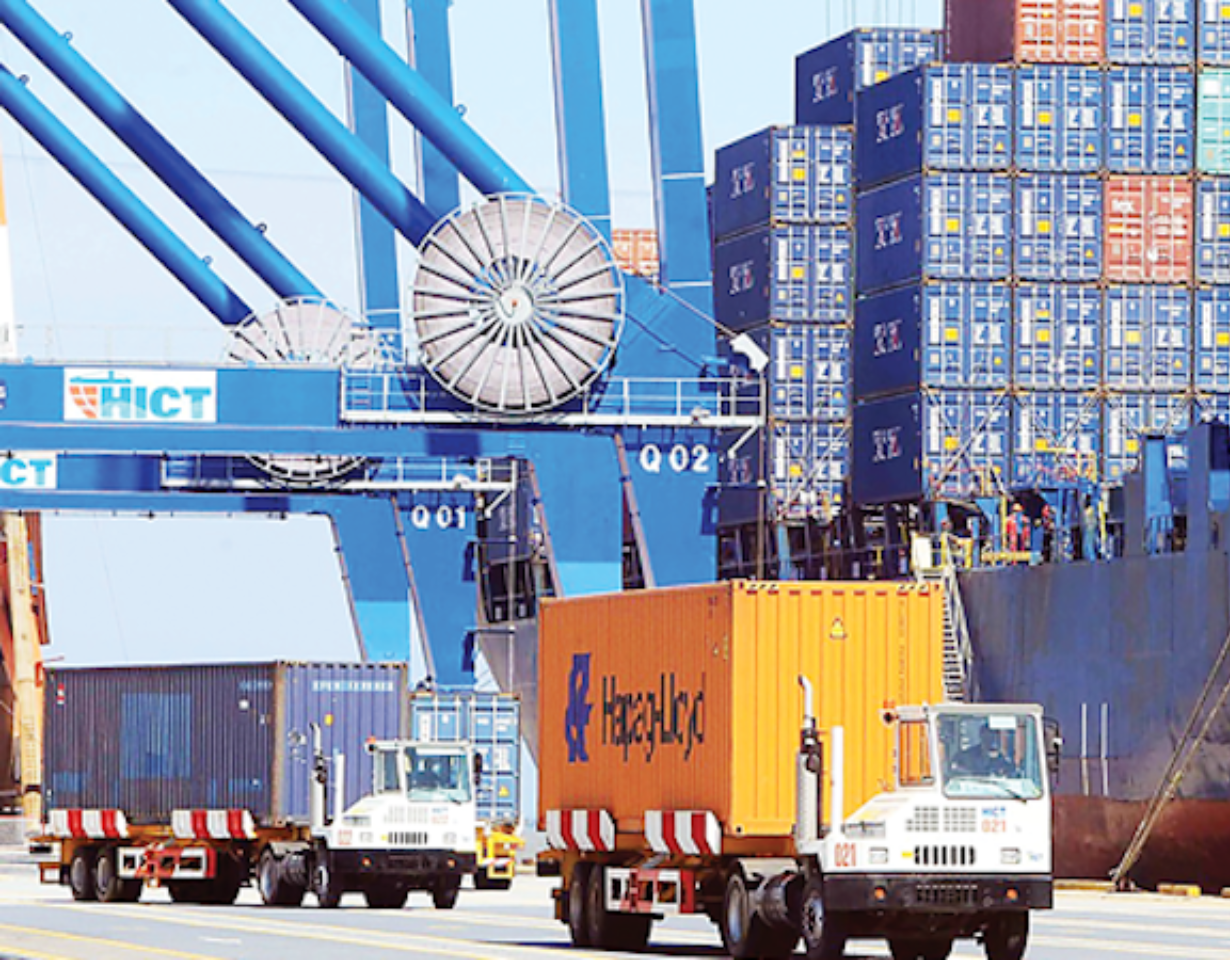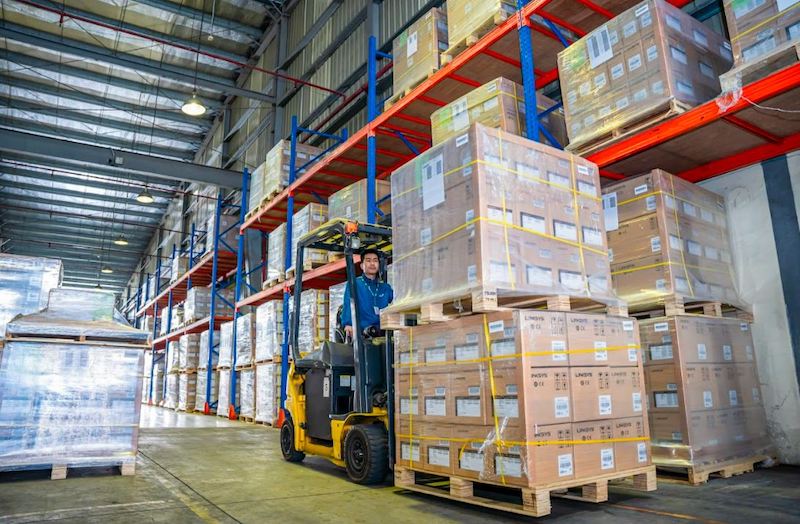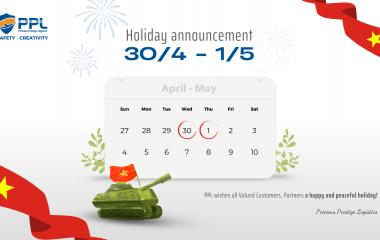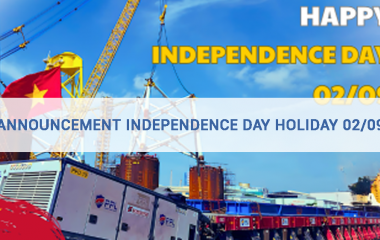“Green logistics” in Vietnam - Which model is suitable?
Although it is a concept that has appeared in the world since the 1980s, it is logistics activities towards sustainable, friendly, and environmentally friendly goals in order to minimize negative impacts on the environment. “Green logistics” has not been given due attention in Vietnam.
The Prime Minister of Vietnam at COP26 made commitments to the international community to the economical and efficient use of energy and emission reduction. Therefore, in the coming years, "Green Logistics" is considered a trend and an indispensable requirement, the Government is interested in promoting energy transformation towards greening, developing an environmentally friendly logistics industry. Economic experts say that Vietnam needs a solution to develop green logistics to take advantage of FTAs, especially new-generation FTAs to help the industry develop, support market expansion, and promote exports.
 Greening transportation and warehousing activities are one of the contents of green logistics development.
Greening transportation and warehousing activities are one of the contents of green logistics development.There are many shortcomings
During the survey with the Vietnam Logistics Report 2022 delegation, the reporter had the opportunity to meet and survey reality at many logistics enterprises including aviation, sea, road, and railway as well as manufacturing enterprises themselves, business owners about their transportation needs and use of logistics services.
It is not surprising that although most businesses are aware of green logistics, there are quite a few businesses that evaluate and invest properly. Meanwhile, objectively, the logistics infrastructure still has many limitations, which are difficulties in means of transport and transportation networks, affecting the implementation plan and efficiency of solutions. Green logistics of enterprises. In addition, the current regulations and policies of the Government of Vietnam only focus on road transport. The restriction of regulations related to other types of logistics infrastructure such as warehouses or information technology systems leads to a lack of synchronization in the application and implementation of green logistics. In addition, policies on production processes to ensure the development of green logistics are very limited, especially those on recycling, repair, and waste recovery; recycling and developing environmentally friendly packaging, and promoting the use of renewable resources.
According to the Vietnam Logistics Report 2022, the content of green logistics development is assessed including greening transportation activities, greening warehousing activities, greening packaging activities, greening information systems, and developing reverse logistics. . However, the results of these activities are still rather lackluster in Vietnam.
According to the World Bank, in Vietnam, road transport has a very large amount of gas emissions, accounting for 85%, followed by inland waterway transport at 10% and air transport at 5%. The cause of this situation is the distribution of the fleet, the truck fleet in Vietnam is very large, the statistics are that 68% of trucks in Vietnam have a tonnage of fewer than 5 tons.
The results of the Vietnam Logistics Report 2022 also show that, in road transport, up to 13% of surveyed enterprises have an empty rate of over 50% of vehicles, which also increases the inefficiency in transportation. road transport and the impact on the environment.
With rail transport, which is considered an environmentally friendly mode of transport, however, it has not yet invested and exploited its full potential. Currently, our vehicles still have a lot of old vehicles, the discharge of toxic waste into the environment or the noise of rail transport are also factors that have a great impact on the environment.
While sea transport and inland waterway transport have had a lot of activities and initiatives to develop green because of their high internationality, air transport has not caught up with this trend.
Specifically, the air transport system, the airport network is planned to cover about 12,409 hectares with major airports located in Hanoi, Da Nang, and Ho Chi Minh City. “However, the three major airports are all overloaded. CO2 emissions of air transport account for 5% and directly pollute the atmosphere”, said Dr. Trinh Thi Thu Huong, Deputy Director of the Institute of Economics & International Business, Foreign Trade University. know.
In the field of warehousing, Vietnam's warehouse system currently still uses conventional electricity mainly for lighting as well as temperature control. Up to 68.6% of enterprises answered that they have not used renewable energy in operating their warehouse operations or have not rented a warehouse using renewable energy.
Regarding the reason, 65.3% of enterprises stated that they did not have enough resources to design the operating system and 29.2% of enterprises said that the cost to set up a warehouse system using renewable energy was high making the business unable to invest. Of the 31.4% of enterprises that have used renewable energy in warehouse operations, 81.8% are in sales.
In particular, there are very little survey data on the current state of logistics information systems in Vietnamese enterprises. Most enterprises with logistics operations in Hanoi only use basic information technology tools such as telephone, SMS, email, fax, website, LAN, and WAN. Although most businesses are aware of the importance of IT applications for the logistics industry, however, due to the large investment rate, leads to IT items of enterprises such as delivery management systems (FMS), transportation management (TMS), warehouse management (WMS), resource management (ERP)... are done in a fragmented, non-systematic manner, so the investment results are not as expected.
“Meanwhile, enterprises are only capable of deploying reverse logistics for products that do not meet customer requirements or by-products and by-products arising in the enterprise without sufficient capacity, as well as not being bound responsibility to organize the collection and recycling of expired products from consumers”, shared Dr. Trinh Thi Thu Huong.

Up to 68.6% of enterprises answered that they have not used renewable energy in operating their warehouse operations or have not rented a warehouse using renewable energy.
Regarding the factors of the internal environment of enterprises, the report also pointed out that, although enterprises have a logistics development strategy, the actual implementation of a green logistics system at enterprises is still limited. This is reflected in the survey results that up to 66.2% of logistics enterprises said that they do not have an environmental management system that meets ISO.14001 standards.
Which model is suitable?
From this fact, the expert group of the Logistics Report 2022 proposes: "The most reasonable approach for green logistics development in Vietnam is to combine a top-down approach (state regulations are required to implementation) and from the bottom up (businesses that are aware of green development should take measures themselves). It is a harmonious combination of state regulations, encouraging enterprises to develop green logistics through policies and measures taken by enterprises and self-implemented.
Accordingly, the Government needs to develop a Strategy and Plan for Logistics Development for 2030, with a Vision for 2050. In which, focus on green logistics development orientation and environmentally friendly solutions.

Speeding up the digital transformation process, promoting the application of information technology, limiting the use of ordinary printed documents, and saving information processing time.
“The state needs to plan and build infrastructure to green logistics activities, continue to improve infrastructure towards modernity, improve infrastructure quality, and facilitate multimodal transport. method. It is necessary to invest in, upgrade and plan a suitable warehouse system", emphasized Dr. Trinh Thi Thu Huong.
At the same time, it is necessary to continue to improve the synchronous legal framework for green logistics activities, to avoid overlapping between ministries and agencies. Especially regulations on air pollution control, emission regulation, and CO2 restriction from means of transport. In addition, there are a series of other regulations and policies such as regulations on compulsory training certificates for vehicle drivers on energy saving, safety, and greening the environment; regulations on green packaging and green waste for manufacturing and warehouse businesses.
The expert group also suggested that the Government encourage and promote green logistics in small and medium enterprises. Using tax and legal mechanisms to create incentives and reduce costs for businesses such as encouraging the use of alternative energy sources in road transport (not petroleum), encouraging the change of transport modes according to the multimodal transport model, and building carbon credits.
In particular, there should be a common measure for green logistics through the development of a set of criteria to measure the level of green logistics development (the green logistics performance index).
For businesses, it is necessary to develop, adjust and perfect a green logistics strategy; Green logistics control at the warehouse; Improve the quality of means of transport. Deploy advanced technology and information technology; Take advantage of the State's incentives; Cooperation between logistics service providers and logistics service users.
Related Posts
New Posts
- PPL successfully performs site-move and load-out of record-breaking 4,000-ton offshore substation topside fabricated by PV Shipyard
- HOLIDAY ANNOUNCEMENT: REUNIFICATION DAY & INTERNATIONAL LABOR DAY (April 30 - May 1, 2025)
- ANNOUNCEMENT OF HUNG KINGS’ COMMEMORATION DAY 2025
- PTSC Thanh Hoa and PPL Sign Strategic Partnership
- INDEPENDENCE DAY HOLIDAY ANNOUCEMENT
- PPL Teambuilding 2024: Uniting Our Strength, Igniting Success!



_cr_380x240.png)



Comments